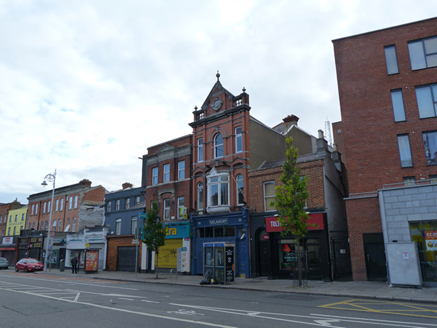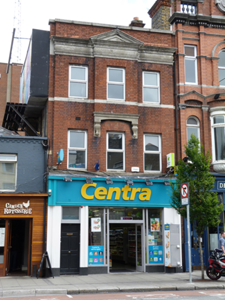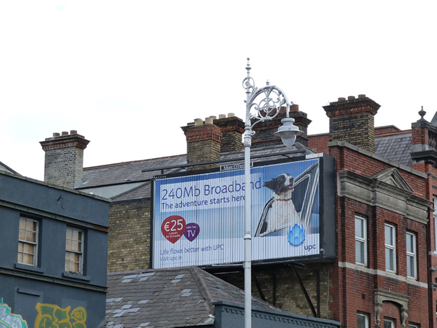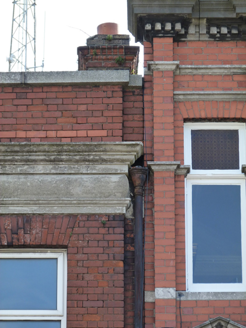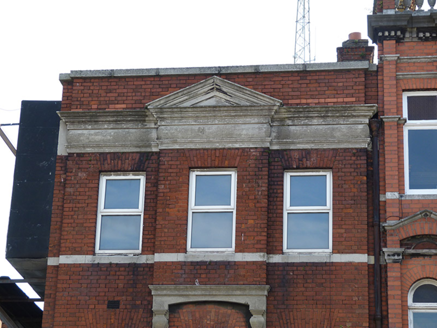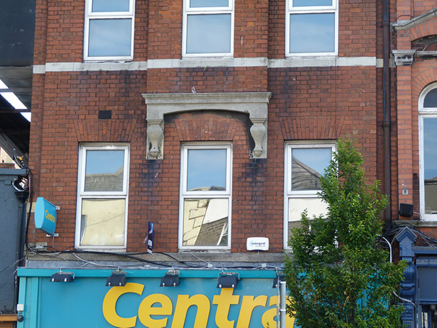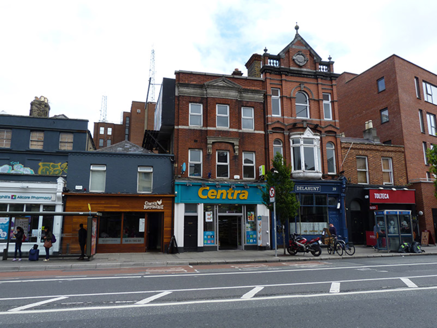Survey Data
Reg No
50920205
Rating
Regional
Categories of Special Interest
Architectural
Original Use
Shop/retail outlet
In Use As
Shop/retail outlet
Date
1880 - 1920
Coordinates
315626, 232943
Date Recorded
13/08/2015
Date Updated
--/--/--
Description
Attached three-bay two-storey commercial premises, built 1900, having shallow breakfront with machicolation to upper floor and shopfront to front (west) elevation. Now in use as shop. Hipped natural slate roof with ridge running perpendicular to street, terracotta ridge tiles, yellow brick chimneystack to north with moulded red brick cornice and yellow clay pots. Roof concealed behind brick parapet with concrete coping, parapet gutters, cast-iron hopper and downpipe breaking through to south. Machine-made red brick walls, laid in Flemish bond to front (west) elevation, having central machicolation to upper floor surmounted by rendered entablature with pulvinated frieze and pediment. Yellow brick laid in English garden wall bond to north elevation. Square-headed window openings with flush render sill course to second floor and replacement uPVC casement windows. Recent timber and glazed shopfront to ground floor, replacement timber panelled door with overlight to north, providing access to upper floors. Street-fronted, located to east side of Camden Street Lower.
Appraisal
This building is one of the many commercial buildings erected on Camden Street in the early twentieth century. it was extended 1913 to the rear to the designs of Orpen & Dickinson architects for a Miss O’Leary. The machine-made brick façade is embellished with a high level of rendered classical detailing comprising an entablature, pediment and stylised machicolation. Despite the insertion of a recent shopfront and uPVC windows, the character of the building has largely been retained across the upper floors. It effectively complements the ornate façade of No. 39 (50920206) to the immediate south. Camden Street is part of an ancient routeway, named St. Kevin’s Port, leading south from the city. It was renamed Camden Street in the late-eighteenth century, possibly commemorating Charles Pratt, the first Earl Camden.
